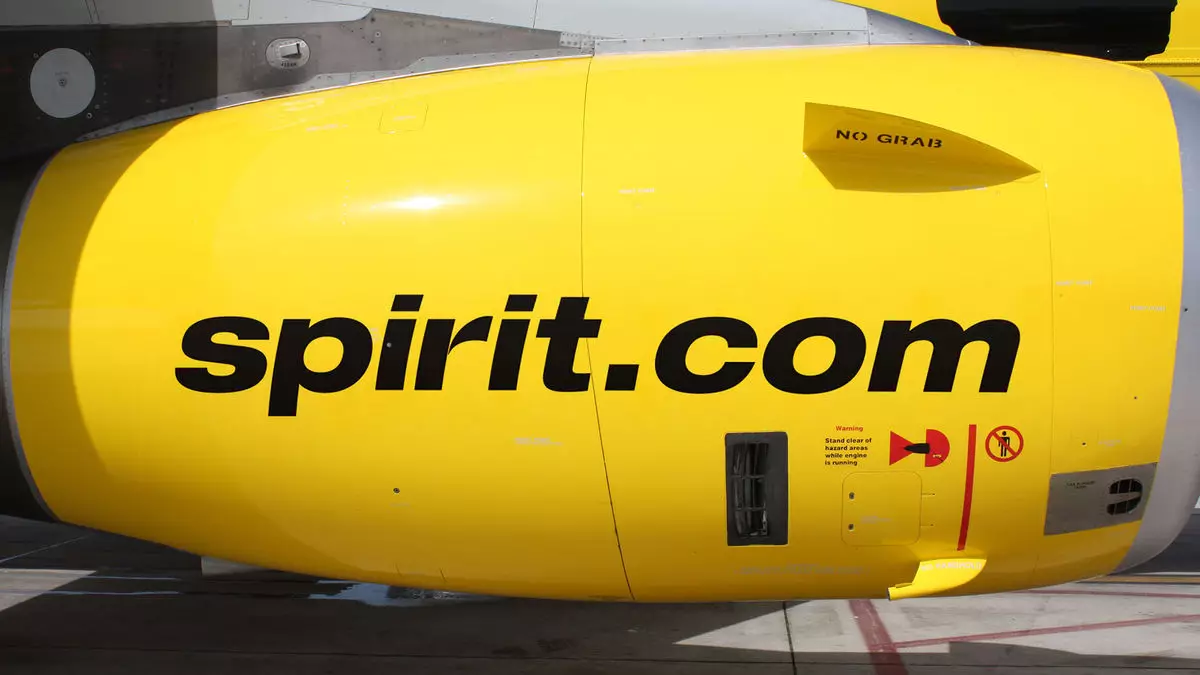In a significant announcement on Monday, Spirit Airlines revealed to its customers that it has filed for a “prearranged” Chapter 11 bankruptcy with the U.S. Securities and Exchange Commission. This strategic move has long been anticipated, given the airline’s struggles with escalating debt, fluctuating revenues, and a challenging operational landscape. By opting for bankruptcy protection, Spirit aims to undertake a comprehensive restructuring plan that promises to offer a respite from its financial woes, while also laying the groundwork for future stability and growth.
As part of this restructuring effort, Spirit Airlines has entered into an agreement with a significant majority of its bondholders, designed to alleviate approximately $795 million in funded debt. This ambitious goal is facilitated by a committed $350 million equity investment from existing stakeholders and an additional $300 million in debtor-in-possession financing. These financial measures are tailored to enhance Spirit’s cash reserves during the Chapter 11 process, ensuring the airline retains liquidity while addressing its underlying issues.
This proactive restructuring underscores the airline’s commitment to not only survive but also thrive in a competitive landscape. Moreover, with increased financial flexibility, Spirit intends to accelerate investments aimed at enhancing the customer experience, promising greater value to travelers.
Spirit’s troubling financial performance over the past several quarters has served as a catalyst for this decision. The airline reported a significant decline in operating revenue, with approximately a $61 million decrease year-on-year attributed to various operational challenges. The elimination of change and cancellation fees, combined with rising operating expenses, has affected its profitability. Such changes, while potentially beneficial to consumers, have evidently strained the airline’s financial model, necessitating drastic measures like Chapter 11.
Moreover, Spirit had previously postponed its quarterly earnings report, indicating the urgency of reconstructing its financial obligations. It’s clear that this finishing touch to its operational strategy came after exhaustive deliberation with bondholders to create viable paths for overcoming liquidity challenges.
The Aftermath of Mergers and Acquisitions
The bankruptcy filing is also tinged with the shadows of Spirit’s recent merger attempt with JetBlue. The failed $3.8 billion deal, which was blocked by the U.S. Department of Justice, left Spirit at a disadvantage, compounding existing financial issues. Following this setback, the airline had to reassess its position and strategize accordingly, leading to the ultimate decision to file for Chapter 11 protection.
As a reaction to this tumultuous period, Spirit seeks to reassure its customers that their travel plans remain intact; tickets, credits, loyalty points, and membership perks will all continue to be honored. The message emphasizes a commitment to customers even amid significant structural changes, aiming to foster a sense of stability and trust.
Looking Forward: Potential Recovery and Future Prospects
Spirit Airlines’ decision to file for Chapter 11 bankruptcy is a pivotal move designed to reset the airline’s trajectory amid financial turmoil. By embracing a strategic restructuring supported by key stakeholders, the airline is laying a foundation to address its debts while focusing on enhancing service delivery. While the path ahead remains fraught with challenges, the proactive measures taken signify Spirit’s resolve to endure and hopefully emerge stronger in the post-bankruptcy landscape. As the airline embarks on this journey, the eyes of the aviation community will undoubtedly be watching closely to see if these efforts will yield a more sustainable and profitable future.


Leave a Reply